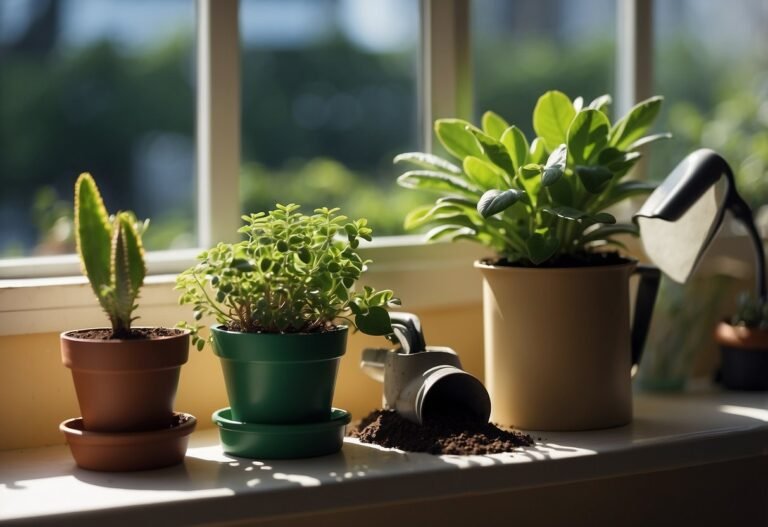Sodiroi Aff: Key Features and Benefits for Plant Enthusiasts
When I first discovered Sodiroi Aff, I was drawn in by its unique features and striking appearance.
Sodiroi Aff is prized among plant collectors for its white-speckled leaves and its ability to thrive in bright, indirect light.
It stands out from other philodendrons, making it a popular choice for anyone who wants a beautiful and interesting houseplant.

I have found that keeping the soil consistently moist while providing warmth and humidity can help Sodiroi Aff look its best.
With its special leaf markings and easy-care nature, this plant offers both beauty and convenience for indoor gardeners.
If you have an interest in rare houseplants or want to learn how to care for something a little different, Sodiroi Aff is an excellent place to start.
The following information will help you understand what makes this plant special and how to keep it thriving in your home.
Sodiroi Aff Overview

I find that Sodiroi Aff is a philodendron known for its striking leaves, unique growth style, and tropical origins.
Understanding its background, physical traits, and native environment helps me care for it properly and appreciate its distinct qualities.
Taxonomy and Classification
Sodiroi Aff belongs to the Araceae family, which contains many popular houseplants.
The term “Aff” stands for “affinis,” which suggests that this plant is closely related to, but not identical with, Philodendron sodiroi.
I notice that sellers and botanists use “aff.” when the exact species is uncertain, but a close resemblance is clear.
This philodendron is often compared to other heart-shaped types, but it has enough differences to be recognized separately.
Its placement in the Philodendron genus means it shares basic care needs and structural features with many other philodendrons.
Even though it is not fully classified as a separate species, it has earned popularity for its unique look and adaptable nature.
Distinctive Features
Sodiroi Aff is most admired for its silvery-green, heart-shaped leaves.
The foliage often displays white speckling or shimmering patches, making it stand out among other philodendrons.
I see that the surface of the leaf may contain a red sinus—the notch where the leaf meets the stem—as well as faint veins for added texture.
Growth habits differ from many upright philodendrons.
Sodiroi Aff prefers to crawl horizontally along the pot surface, similar to Philodendron gloriosum, but unlike climbing types such as Philodendron verrucosum.
This characteristic helps me decide where to place and how to display the plant.
Its leaves can grow quite large under proper care, and with the right humidity and light, the variegation becomes more vivid.
More information on these features can be found on Carnivero’s page about sodiroi aff.
Habitat and Distribution
Sodiroi Aff originates from tropical rainforests where humidity levels stay high and the temperatures are warm year-round.
In its natural habitat, the plant usually grows close to the forest floor, spreading out rather than growing upright.
This crawling habit allows it to take advantage of dappled shade provided by taller trees.
I have learned that species from this group are native to regions in South America but specific locations are not always well documented, especially for forms labeled as “aff.”
Like many tropical philodendrons, Sodiroi Aff thrives in loose, well-draining soil that mirrors the rainforest floor.
High humidity, indirect light, and regular moisture are key to supporting its healthy growth.
Additional cultural info can be explored by visiting Ecuagenera’s listing for sodiroi aff.
Cultivation and Care

I have found that Sodiroi Aff thrives when its basic needs are met, especially regarding light, humidity, and soil.
Paying attention to these conditions helps the plant grow lush and healthy leaves with silver markings.
Soil and Water Requirements
I use well-draining soil to prevent the roots from sitting in water, which helps avoid root rot.
A mix of potting soil, perlite, and orchid bark gives the right balance of moisture and aeration.
This helps the roots breathe and reduces the risk of fungal issues.
I water Sodiroi Aff when the top 2-3 centimeters of soil feel dry.
I avoid letting the soil get soggy or completely dry out.
Usually, this means checking the soil every few days, especially if the weather is warm.
A pot with drainage holes is very important.
It makes it much easier to maintain the correct moisture level.
I also try to keep humidity around 60-70%, which helps prevent leaf curling and brown edges.
If the air in my home is dry, I use a humidifier or place a water tray near the plant.
Light and Temperature Needs
I keep my Sodiroi Aff in a spot with bright, indirect light.
Direct sunlight can scorch its leaves, while low light slows growth and dulls the silver patterns.
A north or east-facing window works well, or I use sheer curtains to filter the sun.
The plant does best in temperatures between 65°F and 80°F (18°C to 27°C).
It doesn’t like cold drafts or sudden changes in temperature.
I make sure it’s kept away from air conditioning vents or heaters, as these can dry out the air and harm the plant.
At night, I try not to let the temperature fall below 60°F (16°C).
Consistent warmth keeps the foliage healthy and helps the plant continue growing year-round, as long as light and water are steady.
Propagation Methods
I usually propagate Sodiroi Aff with stem cuttings.
I select a healthy stem with at least one node and a visible aerial root.
With sterile scissors, I cut below the node, then let the cutting dry for about an hour.
After that, I root it in water or moist sphagnum moss.
Within a few weeks, roots typically appear.
Once the new roots are at least a few centimeters long, I transfer the cutting into soil.
I keep the humidity high during the early stages and mist the plant regularly.
Success rates are higher if the cuttings are taken during the growing season, usually from spring to early summer.
Fertilization and Growth
I fertilize my Sodiroi Aff every four to six weeks during the growing season with a diluted, balanced liquid fertilizer (20-20-20).
Too much fertilizer can cause leaf burn or salt buildup in the soil, so I always follow package instructions and occasionally flush the soil with water to remove extra minerals.
I watch for signs of healthy growth, such as new leaves and strong stems.
If the plant seems slow or the leaves grow smaller, I check for nutrient deficiencies or possible pest issues.
Slow-release fertilizers can be an option for less frequent feeding, but I prefer liquid forms so I can adjust easily as needed.
Growth tends to slow down in winter, so I stop fertilizing until spring when the plant starts actively growing again.
Monitoring the foliage for color and texture helps me adjust the care to suit its needs.
Common Issues and Solutions
When caring for my Sodiroi Aff, I encounter certain issues repeatedly.
Pests, diseases, and growth problems can affect the plant’s appearance and health.
Pest Management for Sodiroi Aff
I often find that spider mites, mealybugs, and scale insects are the main pests attacking Sodiroi Aff.
These pests suck sap from the leaves, leaving yellow spots, sticky residue, or fine webbing.
To spot early infestations, I regularly check the undersides of leaves.
My first step is to isolate any affected plant to prevent the pests from spreading.
I use a cotton swab dipped in rubbing alcohol to dab and remove mealybugs and scale.
For spider mites, wiping the leaves with a damp cloth and increasing humidity usually helps.
Consistent pest control helps prevent severe damage.
If pests persist, I turn to insecticidal soap or neem oil, carefully following label directions.
To keep pests away long-term, I check each new plant before bringing it home and prune leaves that are heavily infested.
Disease Prevention
Root rot is the most common disease I face with this plant, and it’s usually a result of overwatering or poor drainage.
To avoid problems, I only water when the top inch of soil feels dry, and I make sure the potting mix is chunky and well-draining.
Using pots with drainage holes is a must for me.
I watch for signs of disease like yellowing leaves, soft stems, and foul smells from the soil.
If I notice these symptoms, I remove the plant from the pot, cut away any mushy roots with clean scissors, and replant it in fresh soil.
Limiting stress and not letting water sit in trays beneath the pot helps my Sodiroi Aff stay healthy.
By keeping leaves dry and not crowding plants too closely together, I also reduce the risk of fungal or bacterial spots.
Troubleshooting Growth Problems
Slow growth, pale leaves, or distorted new leaves often mean something is wrong with my care routine.
In my experience, low light is one of the main causes of poor growth, so I keep my Sodiroi Aff in medium to bright indirect light.
I avoid direct sun, as it can burn the leaves.
Nutrition is another factor.
If leaves are losing color or looking small, I feed with a balanced, diluted fertilizer once a month during the growing season.
Over-fertilizing, though, can cause brown leaf tips, so I stick to the package guidelines.
Temperature swings or cold drafts can stress the plant, so I make sure it stays above 60°F (15°C) and away from vents.
Correcting these issues almost always leads to healthier, sturdier growth for my Sodiroi Aff.
For further details, I sometimes refer to guides like this care and maintenance resource.
Frequently Asked Questions
I have gathered reliable facts about the Sodiroi Aff’s features, ways to tell it apart from related plants, and its habitat needs.
I examine real threats to its survival, where it grows, and the steps taken for its preservation.
What are the unique characteristics of the Sodiroi Aff species?
From my research, Sodiroi Aff often has leaves with clear silver markings and heart-like shapes.
The plant’s stems sometimes feature small white or pinkish dots at the base where the leaf attaches, a feature that may help with identification.
The plant grows as a climbing aroid and prefers to latch onto surfaces as it spreads.
How can one distinguish between Sodiroi Aff and other similar species?
When I look at Sodiroi Aff compared to true Philodendron sodiroi or other lookalikes, I notice differences in stem coloring and spots.
A common clue is that Sodiroi Aff tends to have more white or pinkish dots where the stem meets the leaf, while the true sodiroi usually does not.
These physical traits are often discussed in the houseplant community, such as on Reddit.
What habitat is essential for the conservation of Sodiroi Aff populations?
Sodiroi Aff grows best in humid, tropical forests with plenty of indirect sunlight and high moisture.
I find that it thrives in nutrient-rich, well-draining soil and requires a warm environment, like that of the rainforest.
Consistent humidity is also crucial for its health.
What are the primary threats to the survival of Sodiroi Aff?
Major threats I have identified include habitat loss from deforestation and illegal plant collection.
Clearing forests removes the specific ecosystem Sodiroi Aff needs to grow.
Overharvesting for the houseplant trade also puts wild populations at risk.
Which regions are currently known to host significant populations of Sodiroi Aff?
Sodiroi Aff and similar plants are mainly found in tropical parts of South America.
Colombia and Ecuador are key areas where I find these species growing in their natural habitat.
What conservation strategies are being employed to protect the Sodiroi Aff?
Local and international plant conservation groups are promoting habitat protection and the cultivation of Sodiroi Aff through legal, sustainable sources.
I have noticed that encouraging buyers to choose cultivated plants over wild-collected ones supports these efforts.
Educating growers about proper care helps reduce pressure on wild populations.



